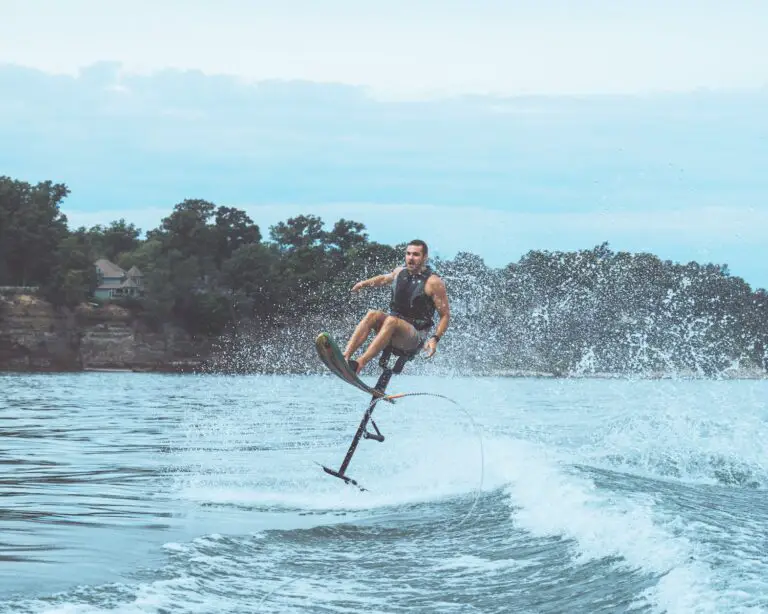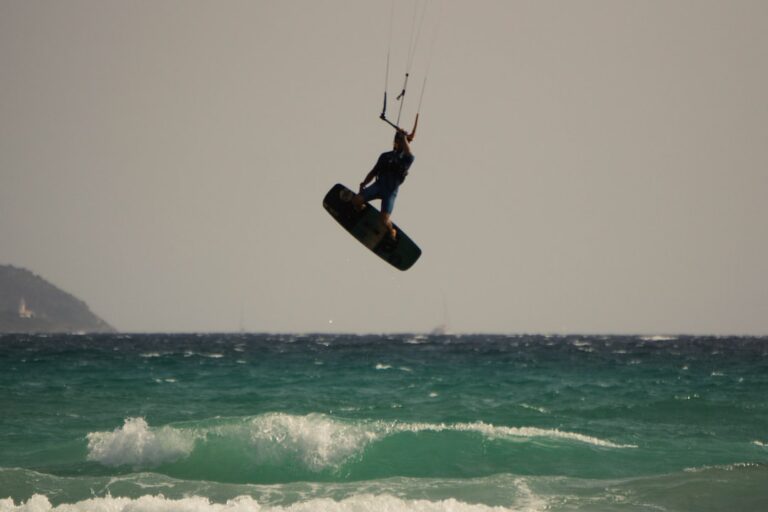Support our hydrofoil educational content for free when you purchase through links on our site. Learn more
14 Expert Tips for Hydrofoiling Surfing in 2025 🌊
Imagine gliding effortlessly above the water, feeling like you’re flying rather than surfing. That’s the magic of hydrofoiling surfing—a sport that’s transforming wave riding with its smooth, almost otherworldly sensation. But before you take off on your first flight, there are crucial tips and tricks you need to know to avoid common pitfalls and accelerate your progress.
Did you know that hydrofoil surfing can reduce water drag by up to 80%, allowing longer rides on smaller waves? Yet, mastering this art requires more than just gear—it demands balance, patience, and the right technique. In this comprehensive guide, we’ll share 14 expert tips drawn from our years of experience at Hydrofoiling™ to help you ride higher, safer, and longer in 2025.
Key Takeaways
- Start with the right gear: Bigger, stable boards and shorter masts make learning easier.
- Use straps and safety equipment: Helmets, impact vests, and foil-specific leashes are non-negotiable.
- Master the basics step-by-step: From pop-up technique to pumping and turning, patience is key.
- Progress gradually: Begin on flat water or small waves, then advance to downwinding and tricks.
- Join the community: Learning with others accelerates growth and keeps the stoke alive.
Ready to gear up? Check out our favorite hydrofoil boards and accessories here:
- Slingshot Hover Glide 105 Foil Board: Amazon | Slingshot Official
- Lift Foils 4’6” Carbon Foil Board: Amazon | Lift Foils Official
- Pro-Tec Water Sports Helmet: Amazon | Pro-Tec Official
Dive in and start your hydrofoil surfing adventure today!
Table of Contents
- ⚡️ Quick Tips and Facts
- 🌊 The Hydrofoil Surfing Revolution: A Brief History & Evolution
- ❤️ Why We Fell in Love with Foiling: The Allure of Gliding
- 🛠️ Gear Up, Buttercup! Essential Hydrofoil Surfing Equipment
- 🏄♀️ Foil Board Selection: Volume, Length, and Shape for Your Ride
- 📏 Foil Mast Length: Finding Your Sweet Spot for Lift and Control
- 🦅 Foil Wing Design: Front Wing, Stabilizer, and Aspect Ratio Explained
- 🦶 Straps or Strapless? The Great Debate for Hydrofoil Surfers
- ⛑️ Leashes, Helmets, and Vests: Non-Negotiable Safety Gear
- 🚀 Mastering the Basics: Your First Steps to Foiling Freedom
- 🌊 1. Start Small, Dream Big: Choosing Your Learning Ground
- 🚤 2. Tow-In or Paddle-In? Picking Your Launch Method
- 🤸 3. The Pop-Up Puzzle: Getting to Your Feet on the Foil Board
- ⚖️ 4. Finding Your Balance Point: The Hydrofoil Sweet Spot
- 💪 5. Pumping for Power: Generating Speed and Sustaining Flight
- 🔄 6. Turning and Carving: Mastering the Glide and Direction
- 💥 7. Dealing with Wipeouts: The Inevitable Splashdown and How to Recover
- 🧐 8. Reading the Waves: Understanding the Ocean’s Energy for Foiling
- 🛬 9. The Art of the Touchdown: Controlled Re-entry and Reset
- 📈 10. Progression Pathways: From Flat Water to Open Ocean Swells
- ✨ Advanced Hydrofoiling Techniques: Taking Flight to New Heights
- 🛠️ Common Foiling Fails & How to Fix Them: Troubleshooting Your Ride
- 🚨 Safety First, Always! Essential Hydrofoil Surfing Safety Protocols
- 🔧 Maintenance Matters: Keeping Your Foil in Top Shape for Longevity
- 🤝 The Foiling Community: Connecting with Fellow Gliders and Learning Together
- 🏁 Conclusion: Your Journey to Hydrofoil Mastery Awaits!
- 🔗 Recommended Links: Dive Deeper into the Foiling World
- ❓ FAQ: Your Burning Hydrofoil Questions Answered
- 📚 Reference Links: Sources We Trust for Hydrofoiling Insights
⚡️ Quick Tips and Facts
Welcome to the thrilling world of hydrofoil surfing! If you’re wondering what are the tips for hydrofoiling surfing, you’ve landed in the right spot. At Hydrofoiling™, we’ve spent countless hours gliding above the water’s surface, and we’re here to share the juiciest nuggets of wisdom to get you flying smoothly.
Quick Tips to Kickstart Your Foiling Journey
- Start with the right gear: Bigger boards (around 70-100 liters) and larger, more stable foils make learning easier.
- Use straps: They keep your feet locked in, reducing the risk of falling onto the foil.
- Practice slow, controlled movements: Unlike traditional surfing, foiling demands patience and finesse.
- Choose small, clean waves: Avoid foamy or choppy waves that can knock you off balance.
- Learn behind a powered craft: Tow-in sessions behind a jet ski or e-foil can accelerate your understanding of foil lift and balance.
- Focus on balance and stance: Keep your knees bent, chest upright, and weight centered over the foil.
- Expect wipeouts: Falling is part of the learning curve—embrace it and learn how to recover safely.
Fascinating Facts
| Fact | Detail |
|---|---|
| Hydrofoil surfing reduces drag by up to 80% | The foil lifts the board above water, drastically cutting drag and allowing smoother rides. Source |
| Learning curve steepness | First 2-3 sessions are the hardest; progress becomes exponential afterward. AppleTree Surfboards |
| Mast length range | Beginner masts typically range from 24″ to 28″ (60cm to 72cm) for better control. |
| Straps usage | 95% of foilers prefer straps for safety and control. |
Ready to dive deeper? Let’s glide into the history and evolution of this revolutionary sport!
🌊 The Hydrofoil Surfing Revolution: A Brief History and Evolution
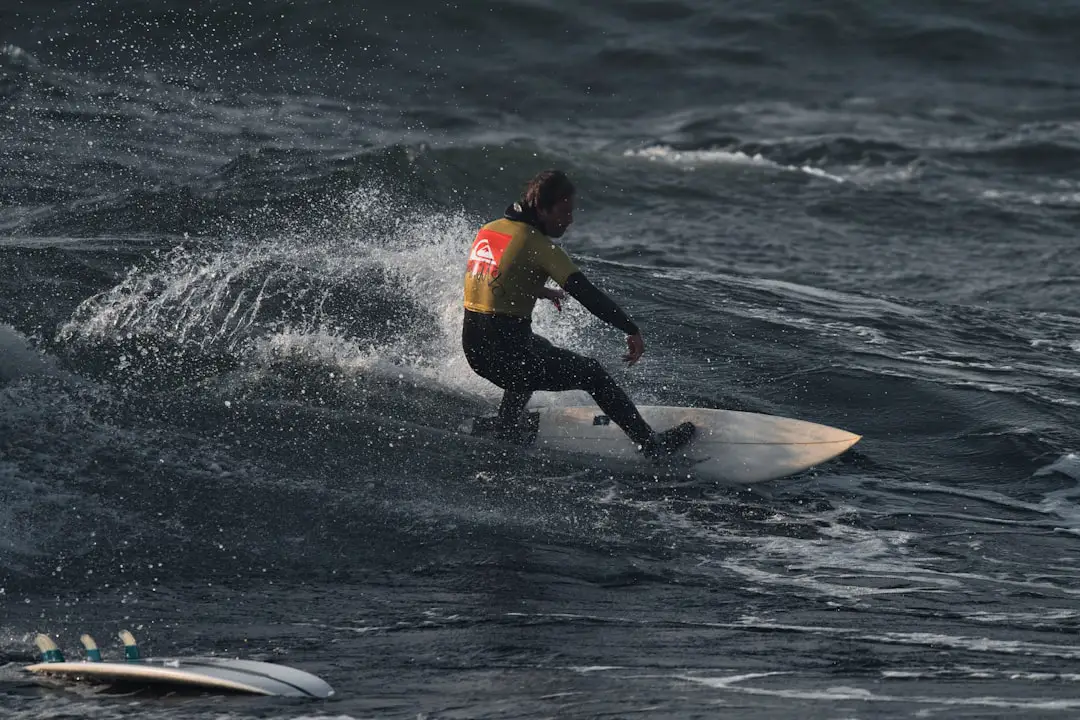
Hydrofoil surfing isn’t just a fad—it’s a game-changer that’s reshaping how we interact with waves. The concept of hydrofoils dates back to the early 1900s when Alexander Graham Bell experimented with underwater wings to lift boats. Fast forward to today, and hydrofoil surfing has exploded into a vibrant community, blending technology and ocean artistry.
From Bell to Board: The Evolution
- Early experiments: Bell’s HD-4 hydrofoil boat in 1919 was a pioneering step.
- Wakeboarding and kiteboarding adoption: Hydrofoils gained traction in these sports during the 2000s.
- Surf foiling breakthrough: Around 2010, brands like Lift Foils and Slingshot introduced dedicated surf foils, making the sport accessible.
- Electric foils: Companies like Fliteboard and Waydoo have added remote-controlled electric hydrofoils, expanding possibilities.
Want to geek out on hydrofoil history? Check out our detailed Hydrofoil History articles for more.
❤️ Why We Fell in Love with Foiling: The Allure of Gliding
Why do we keep coming back to hydrofoiling? Because it’s pure magic—the sensation of flying above the water, almost weightless, is unlike anything else. It’s surfing, but elevated—literally!
- Longer rides: Foils allow you to ride waves that traditional boards can’t catch, extending your session.
- Smooth and quiet: The reduced drag means less choppy rides and more flow.
- All-condition surfing: Mushy, small, or fading waves become playgrounds.
- Fitness and fun: Pumping the foil engages your core and legs, making it a full-body workout.
Our team’s first foil ride? Picture a mix of terror and exhilaration, with a splashy wipeout followed by a grin that wouldn’t quit. That’s the spirit of foiling!
🛠️ Gear Up, Buttercup! Essential Hydrofoil Surfing Equipment
Before you hit the water, you need the right gear. Here’s what we recommend based on years of trial, error, and triumph.
🏄♀️ Foil Board Selection: Volume, Length, and Shape for Your Ride
| Feature | Beginner Recommendation | Advanced Rider Preference |
|---|---|---|
| Volume | 70-100 liters (more stability) | 40-60 liters (more maneuverable) |
| Length | 5’6” to 6’6” | 4’6” to 5’6” |
| Shape | Rounded nose, wide tail | Narrower, performance-oriented |
| Construction | Foam core with epoxy or carbon | Full carbon or high-grade composites |
Why it matters: Larger volume boards float better and provide stability during those nerve-wracking first flights. Smaller boards pump easier and respond faster once you’re confident.
Our favorites:
- Slingshot Hover Glide 105 — beginner-friendly, durable.
- Lift Foils 4’6” Carbon — for advanced riders craving agility.
📏 Foil Mast Length: Finding Your Sweet Spot for Lift and Control
| Mast Length | Pros | Cons | Best For |
|---|---|---|---|
| 24″ (60cm) | Easier control, safer | Less clearance over waves | Beginners, choppy water |
| 28″ (70cm) | Balanced stability and lift | Slightly trickier to control | Intermediate foilers |
| 32″+ (80cm) | More clearance, bigger waves | Harder to recover from falls | Advanced riders, big surf |
Pro tip: Start with a shorter mast to build confidence and avoid scary wipeouts. We recommend the Lift Foils 70cm Mast for beginners.
🦅 Foil Wing Design: Front Wing, Stabilizer, and Aspect Ratio Explained
- Front wing size: Larger wings generate more lift and stability but reduce speed. Smaller wings are faster but less forgiving.
- Aspect ratio: High aspect wings (long and narrow) are faster and more efficient; low aspect wings (short and wide) offer better maneuverability.
- Stabilizer: Smaller stabilizers increase agility; larger ones add stability.
Our experience: Beginners should opt for a larger front wing with a moderate aspect ratio to maximize lift and ease of control. Brands like Slingshot and Naish offer excellent options.
🦶 Straps or Strapless? The Great Debate for Hydrofoil Surfers
Straps ✅
- Pros: Secure footing, safer landings, easier pumping.
- Cons: Slightly less freedom of movement, requires practice to get in/out.
Strapless ❌
- Pros: More natural feel, easier to bail.
- Cons: Higher risk of slipping off, less control during aggressive maneuvers.
Our team overwhelmingly prefers straps for learning and progression. The safety factor alone is worth it. Check out AppleTree Soft Foot Straps for comfort and durability.
⛑️ Leashes, Helmets, and Vests: Non-Negotiable Safety Gear
- Leash: Use a foil-specific leash to avoid tangles and injuries.
- Helmet: Protects your head from the foil’s sharp edges. Brands like Pro-Tec make lightweight, water-friendly helmets.
- Impact vest: Adds buoyancy and protection, especially in crowded lineups.
Safety first, always! Our Hydrofoil Safety Protocols article dives deeper.
🚀 Mastering the Basics: Your First Steps to Foiling Freedom
Ready to get your feet wet? Here’s a detailed roadmap to your first successful hydrofoil ride.
🌊 1. Start Small, Dream Big: Choosing Your Learning Ground
- Flat water or small waves: Ideal for beginners to focus on balance without unpredictable wave forces.
- Protected bays or lakes: Less current and chop.
- Avoid crowded spots: Safety and space are paramount.
🚤 2. Tow-In or Paddle-In? Picking Your Launch Method
- Tow-in: Using a jet ski or e-foil to get up to speed quickly. Great for understanding foil lift without wave timing pressure.
- Paddle-in: Traditional method, requires more patience but builds essential paddling and wave reading skills.
We recommend starting with tow-in lessons if possible. It’s a fantastic confidence booster.
🤸 3. The Pop-Up Puzzle: Getting to Your Feet on the Foil Board
- Step 1: Paddle or get towed until the foil starts to lift.
- Step 2: Slowly bring your front foot near the front strap, keeping hands on the rails for balance.
- Step 3: Shift weight gradually and place your back foot in the rear strap.
- Step 4: Stand up slowly, bending knees to absorb lift and maintain control.
Pro tip: Avoid sudden jerks; smooth, deliberate movements keep the foil stable.
⚖️ 4. Finding Your Balance Point: The Hydrofoil Sweet Spot
- Keep your weight centered over the mast.
- Bend knees and keep your chest upright.
- Use subtle shifts in hips and shoulders to steer.
- Avoid leaning too far forward or back to prevent nose dives or stalls.
💪 5. Pumping for Power: Generating Speed and Sustaining Flight
- Use a rhythmic up-and-down motion with your legs to “pump” the foil.
- This builds speed and lift without external propulsion.
- It’s like bouncing on a trampoline—timing is everything!
🔄 6. Turning and Carving: Mastering the Glide and Direction
- Lean into turns gently, shifting weight to your toes or heels.
- Use your upper body to guide direction.
- Start with wide, slow turns before progressing to sharper carves.
💥 7. Dealing with Wipeouts: The Inevitable Splashdown and How to Recover
- Relax your body to avoid injury.
- Protect your head and limbs from the foil.
- Surface calmly and retrieve your board.
- Practice falling safely in controlled environments.
🧐 8. Reading the Waves: Understanding the Ocean’s Energy for Foiling
- Look for waves with a clean face and gradual break.
- Avoid closeout or foamy waves that disrupt foil stability.
- Learn to anticipate wave speed and shape to time your takeoff.
🛬 9. The Art of the Touchdown: Controlled Re-entry and Reset
- When you want to stop foiling, gently shift weight back to lower the foil.
- Land softly on the water and regain a stable position.
- Use this moment to reset and prepare for the next ride.
📈 10. Progression Pathways: From Flat Water to Open Ocean Swells
- Start on flat water or small waves.
- Progress to larger, cleaner ocean waves.
- Experiment with longer rides, turns, and pumping.
- Try downwind foiling and eventually airs and tricks.
For more detailed beginner tips, check out our Hydrofoil Basics section.
✨ Advanced Hydrofoiling Techniques: Taking Flight to New Heights
Once you’ve mastered the basics, it’s time to push boundaries!
💨 11. Downwinding: The Ultimate Glide and Endless Ride
- Use wind and swell to ride long distances without paddling.
- Requires excellent balance and wave reading.
- Try it on open ocean or large lakes with steady wind.
🌬️ 12. Pumping Through Lulls: Keeping the Flow Alive
- Master the art of pumping to maintain speed when waves slow down.
- Use your legs and core to generate lift and momentum.
- It’s a workout and a dance with the water.
🤸♀️ 13. Airs and Tricks: Defying Gravity on Your Hydrofoil
- Advanced riders can launch off wave lips or ramps.
- Requires precise timing and control.
- Popular tricks include 360 spins, grabs, and flips.
🌦️ 14. Riding Different Conditions: Adapting Your Approach for Every Swell
- Adjust foil size and mast length based on wave size and chop.
- Modify stance and pumping technique for windier or smoother days.
- Always respect conditions and your limits.
Explore our Advanced Hydrofoiling Techniques for step-by-step tutorials.
🛠️ Common Foiling Fails and How to Fix Them: Troubleshooting Your Ride
Even the pros have bad days! Here’s how to tackle common issues:
| Problem | Cause | Fix |
|---|---|---|
| Nose diving | Too much forward weight | Shift weight back, bend knees more |
| Foil stalls | Insufficient speed or lift | Pump harder, adjust stance |
| Difficulty popping up | Jerky movements, timing off | Slow down, practice pop-up on land |
| Losing balance | Poor weight distribution | Focus on centered stance |
| Wipeouts on takeoff | Too aggressive or early stand | Wait for foil engagement, be patient |
Remember, every fall is a lesson in disguise!
🚨 Safety First, Always! Essential Hydrofoil Surfing Safety Protocols
Hydrofoiling is exhilarating but comes with risks. Here’s how to stay safe:
- Always wear a helmet and impact vest.
- Use a foil-specific leash to prevent runaway boards.
- Check local regulations and avoid crowded spots.
- Learn proper falling techniques to avoid injury.
- Never foil alone—buddy systems save lives.
- Inspect your gear before every session.
Our full safety guide is a must-read: Hydrofoil Safety Protocols.
🔧 Maintenance Matters: Keeping Your Foil in Top Shape for Longevity
Your foil is an investment—treat it right!
- Rinse with fresh water after every session to prevent corrosion.
- Check screws and mounts regularly for tightness.
- Inspect wings and mast for cracks or damage.
- Store in a padded bag away from direct sunlight.
- Lubricate moving parts if applicable.
Brands like Lift Foils provide excellent maintenance tips.
🤝 The Foiling Community: Connecting with Fellow Gliders and Learning Together
One of the best parts of hydrofoiling is the community. Here’s how to plug in:
- Join local foiling clubs and meetups.
- Follow Hydrofoiling™ on social media for tips and events.
- Participate in forums like Foil Zone and Reddit’s r/foilboarding.
- Attend workshops and lessons from pros.
Sharing stories, gear hacks, and wipeout tales makes the journey richer and more fun!
Ready to take off? We’ve got you covered with gear reviews, tutorials, and community support right here at Hydrofoiling™. For more on getting started, check our detailed guide on What are the tips for Hydrofoiling?. Happy foiling! 🌊🛠️🏄♂️
🏁 Conclusion: Your Journey to Hydrofoil Mastery Awaits!
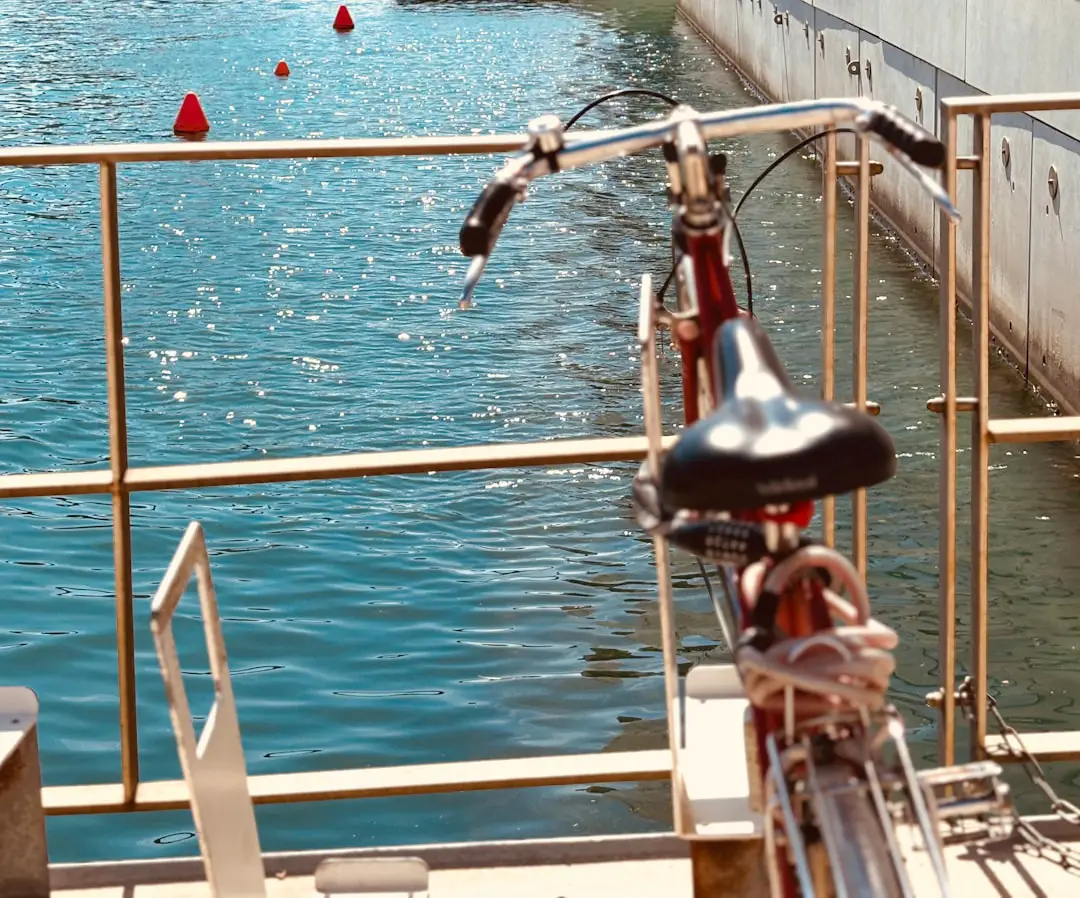
Wow, what a ride! From the quick tips that get you started, through the gear essentials, to mastering the basics and advanced techniques, we’ve covered the full spectrum of hydrofoil surfing wisdom. Remember, foiling is a journey—sometimes bumpy, often exhilarating, and always rewarding.
If you’re just starting out, focus on patience, safety, and the right equipment. Bigger boards with stable foils, shorter masts, and straps will be your best friends. As you progress, you’ll find yourself carving waves and even launching airs, feeling like you’re truly flying over the ocean.
Our personal experience at Hydrofoiling™ confirms: the magic of hydrofoiling lies in persistence and community. Embrace the falls, celebrate the flights, and connect with fellow foilers who share your passion. The ocean is vast, and with a foil under your feet, it’s yours to explore like never before.
Ready to take the plunge? Your hydrofoil adventure starts now—see you on the water! 🌊🛠️🏄♂️
🔗 Recommended Links: Dive Deeper into the Foiling World
Shop Essential Hydrofoil Gear
-
Slingshot Hover Glide 105 Foil Board:
Amazon | Slingshot Official Website -
Lift Foils 4’6” Carbon Foil Board:
Amazon | Lift Foils Official Website -
Lift Foils 70cm Mast:
Amazon | Lift Foils Official Website -
AppleTree Soft Foot Straps:
Amazon | AppleTree Official Website -
Pro-Tec Water Sports Helmet:
Amazon | Pro-Tec Official Website
Recommended Books on Hydrofoiling & Surfing
- Foil Surfing: The Complete Guide by Sky Solbach — Amazon
- The Art of Hydrofoiling by Hydrofoil Experts — Amazon
- Surf Science: An Introduction to Waves for Surfing by Tony Butt — Amazon
❓ FAQ: Your Burning Hydrofoil Questions Answered
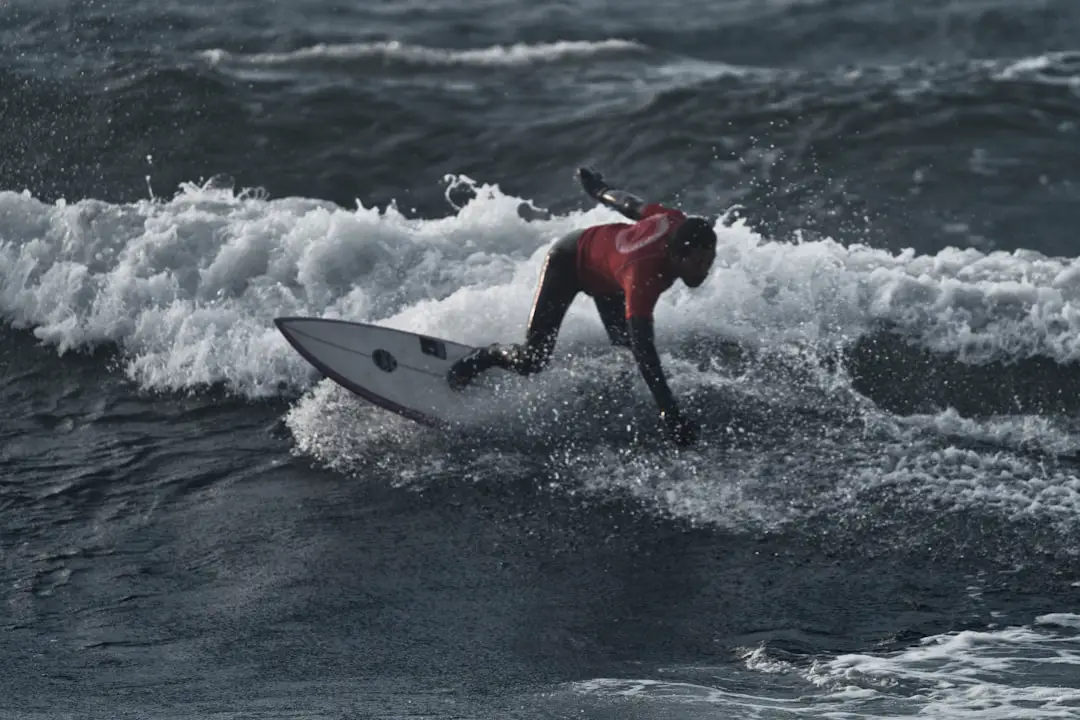
What is the best size hydrofoil for a beginner surfer to learn on?
For beginners, a mast length between 24″ (60cm) and 28″ (70cm) is ideal. This length offers a balance of stability and control, reducing the risk of sudden falls from excessive height. Larger masts (32″+) are better suited for advanced riders tackling bigger waves.
The front wing should be larger and wider to generate more lift at lower speeds, making it easier to get up and stay afloat. For example, a 1500-1800 cm² wing is a great starting point.
Starting with a larger, more buoyant board (70-100 liters) also helps maintain stability during takeoff and while learning to balance.
Read more about “Is Hydrofoiling Easy? 7 Truths Every Beginner Must Know! 🌊 (2025)”
How do I choose the right hydrofoil board for my skill level and surfing style?
Choosing the right board depends on your weight, skill level, and intended use:
- Beginners: Opt for a larger volume board (70-100 liters) with a wide tail and rounded nose for stability and easier paddling.
- Intermediate to advanced: Smaller boards (40-60 liters) offer better maneuverability and faster pumping but require more skill.
- Style considerations: If you prefer carving and tight turns, a smaller, performance-oriented board is better. For cruising and long rides, bigger boards shine.
Also, consider whether you want strap or strapless setups. Straps provide security and control, especially for beginners.
For more detailed guidance, check our Hydrofoil Board Selection resources.
Read more about “How Does Hydrofoiling Work in Surfing? 9 Secrets You Must Know 🌊 (2025)”
What are some common mistakes to avoid when learning to hydrofoil surf for the first time?
- Rushing the pop-up: Jerky or fast movements can destabilize the foil. Slow, deliberate weight shifts are key.
- Leaning too far forward or back: This causes nose dives or stalls. Find your balance point over the mast.
- Ignoring safety gear: Helmets, impact vests, and leashes are non-negotiable.
- Choosing the wrong conditions: Avoid choppy, foamy waves and crowded spots. Start on small, clean waves or flat water.
- Skipping lessons or tow-in practice: Learning behind a powered craft can dramatically shorten your learning curve.
Read more about “8 Best Ways to Get Up on a Hydrofoil Board in 2025 🚀”
What kind of physical conditioning and practice is required to master the basics of hydrofoiling surfing?
Hydrofoiling demands core strength, balance, and leg endurance. Regular exercises like yoga, balance board training, and leg workouts will help.
Practice sessions should focus on:
- Balance drills: On land and in water.
- Pumping technique: Develop leg strength and timing.
- Wave reading: Understanding ocean energy to anticipate rides.
- Controlled falls: Learning how to fall safely reduces fear and injury risk.
Consistency is key—short, frequent sessions beat occasional long ones. Over time, your body adapts to the unique demands of foiling.
How important are straps in hydrofoil surfing, and should beginners use them?
Straps are highly recommended for beginners. They keep your feet locked to the board, reducing the chance of slipping off and hitting the foil. This safety aspect alone makes straps a must-have.
Straps also improve control during pumping and turns, making it easier to build confidence. While some advanced riders prefer strapless for freedom, starting with straps is the safer, smarter choice.
Read more about “7 Basic Requirements to Get Started with Hydrofoil Boarding in 2025 🌊”
Can hydrofoil surfing be learned without access to waves?
Absolutely! Many beginners start on flat water lakes or bays, using tow-in methods behind jet skis or e-foils to get the feel of lift and balance. This controlled environment lets you focus on technique without the unpredictability of waves.
Electric hydrofoil boards like those from Fliteboard offer another way to practice foiling in flat water, accelerating your learning curve.
Read more about “10 Must-Have Foiling Windsurfing Equipment for 2025 🚀”
📚 Reference Links: Sources We Trust for Hydrofoiling Insights
- Hydrofoil Surfing: The Ultimate Beginner’s Guide to the Foil Surfboard — Barts.com
- AppleTree Surfboards: Tech Talk – Getting Into Foil Surfing
- Lift Foils Official Website
- Slingshot Sports Official Website
- Pro-Tec Helmets
- ScienceDirect: Hydrofoil Drag Reduction Study
- Foil Zone Community Forum
- Reddit r/foilboarding
For more tips and gear reviews, explore our Hydrofoil Equipment Reviews and Hydrofoil Basics sections.
Ready to soar? Your hydrofoil adventure is just a paddle away!

